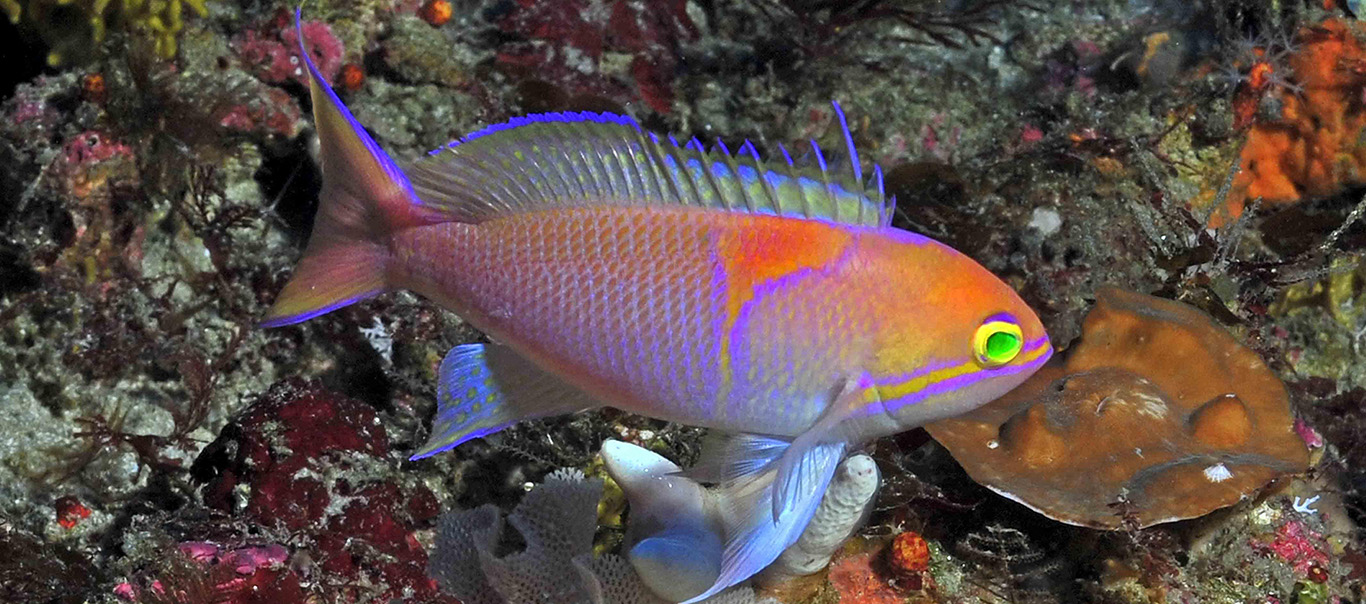First ever record of two Goldie species in South Africa
03 December 2015

In March 2014, Peter led a Trimix expedition team in Sodwana bay that included 16 divers from the Alternative Dive Group and Triton Lodge staff. They completed a total of 22 dives during which they reached the deep reef systems located at a depth of 69m and were also able to survey the coelacanth habitat down to a depth of 115m in the Jesser canyon. A total of 147 observations were uploaded onto iSpot as a result of this expedition as part of the SeaKeys and Sea Fish Atlas Launch.
A total of 147 observations were uploaded onto iSpot as a result of this expedition as part of the SeaKeys and Sea Fish Atlas Launch.
On this trip the team observed and photographed two species of Goldie, the lunate goldie (Pseudanthias lunulatus) and the swallowtail goldie (P. bimarginatus). This is the first time these species have been seen in South Africa.
%20Eve%20Marshall.jpg)

The swallowtail goldie was first described by Randall in 2011. It is named for the conspicuous broad, lavender-blue, upper and lower margins of the male’s tail. It was previously only known from Maldives, Indonesia and Mozambique. The lunate goldie was previously only known from the Red Sea, Somalia, Mauritius, Maldives and Bali (Indonesia). Peter's photographs represent the first records of both these species for South Africa. Goldies form part of the family Serranidae and are often found in large shoals over reefs. The males keep a harem and are much more brightly coloured than their females. If the male of the shoal dies, the most dominant female changes sex and takes control of the harem. Goldies are common residents of most reefs and are often seen in the canyons off Sodwana bay.